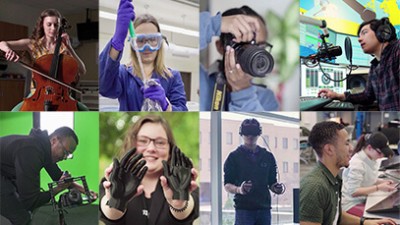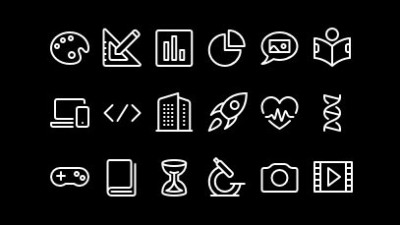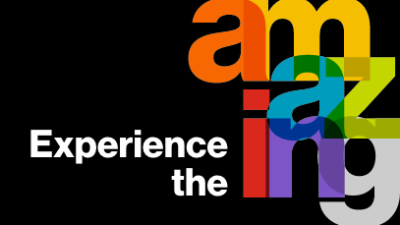
Larry Villasmil
Associate Professor
Department of Manufacturing and Mechanical Engineering Technology
College of Engineering Technology
585-475-5304
Office Location
Larry Villasmil
Associate Professor
Department of Manufacturing and Mechanical Engineering Technology
College of Engineering Technology
Education
BSME, Universidad del Tachira (Venezuela); MSME, Ph.D., Texas A&M University
585-475-5304
Select Scholarship
Published Conference Proceedings
Villasmil, Larry A. "Numerical Simulations of Gas-Centered Swirl-Coaxial Injectors for Rocket Engine Applications. Evaluating the Ability of “Standard” Turbulence Models in Capturing the Complex Nature of Spray Atomization." Proceedings of the AIAA Aviation 2016, Washington D.C. June 13-17 2016. Ed. N/A. Washington, District of Columbia: AIAA (Thomson Reuters), 2016. Web.
Gautam, Amitabh S., et al. "A Comparison of the Emissions from Gasoline vs. Compressed Natural Gas for an Electronic Fuel Injected Two Cylinder, Four-Stroke Engine." Proceedings of the SAE - 2012 Small Engine Technology Conference & Exhibition. Ed. SAE. Madison, WI: n.p., 2012. Print.
Villasmil, Larry A. and Robert D. Garrick. "Implementing a Virtual Laboratory for a Directed and Synchronous Student Learning Experience; Combining Virtual and Real Experimentation: An Effort to Enhance Students' Conceptual Understanding of Fluid Power." Proceedings of the American Society of Engineering Educators 119th Annual Conference & Exposition. Ed. ASEE. San Antonio, TX: n.p., 2012. Print.
Invited Keynote/Presentation
Kim, Spencer, et al. "Increasing Engagement in the Materials Science Classroom Through the Use of Guided Inquiry in a Technology Rich Learning Environment." 5th International Materials Education Symposium. University of Cambridge. Cambridge, United Kingdom. 5 Apr. 2013. Conference Presentation.
Dell, Elizabeth, Robert Garrick, and Larry Villasmil. "Creating Technology-Rich Learning Environments for the Classroom." 2013 International Higher Education Teaching and Learning (HETL) Association Conference. University of Central Florida. Orlando, Florida. 15 Jan. 2013. Conference Presentation.
Villasmil, Larry A. and Robert D. Garrick. "TRiLE - The Use of a Technology Rich Interactive Environment in the Classroom to Ensure Student Engagement and Success." RIT's annual Faculty Institute on Teaching & Learning. The Wallace Center at RIT. Rochester, NY. 31 May 2012. Conference Presentation.
Book Chapter
Garrick, Robert, et al. "Creating Technology Rich Learning Environments for the Classroom." Cutting-edge Technologies in Higher Education, Volume 6E. Ed. Charles Wankel and Patrick Blessinger. Bingley BD16 1WA, United Kingdom: Emerald Group Publishing Limited, 2013. 263-306. Print.
Journal Paper
LaCarte, Joseph, et al. "Modern Tools for Communication in Concurrent Engineering." GSTF Journal of Engineering Technology 1. (1) (2012): 66-72. Print.
Published Article
Published Article: Garrick, Robert, ScottAnson, Elizabeth Dell, Carol Romanowski,Michael Slifka and Larry Villasmil.“Accelerating Untenured FacultyScholarship.” Conference for Industry and Education Collaboration (CIEC), 3-5 Feb. 2010. n.p. Print. *
Garrick, Robert, ScottAnson, Mario Castro-Cedeno, Elizabeth Dell,Christopher Greene, Carol Romanowski, Michael Slifka, Larry Villasmil, and James Lee. “UFAST - Practical advice for accelerating new faculty scholarship.” ASEE Annual Conference and Exposition, 2010. n.p. Web. *
Currently Teaching
MCET-330
Fluid Mechanics & Fluid Power
3 Credits
This course involves the study of the basics of fluid mechanics and fluid power. Areas of study include pressure, forces, viscosity, bulk modulus, flow characterization, efficiency and losses. Fluid Power systems and components are also reviewed including hydraulic/pneumatic systems, pumps, compressors, actuators, valves, accumulators, and directional control valves.
MCET-535
Thermal Fluid Systems Project
2 Credits
Students perform laboratory experiments in thermodynamics, fluid mechanics, and heat transfer. Students will do a group project involving the design, modification, and analysis of a Thermo-Fluid system, its instrumentation, method of test, data analysis and final report presentation. Special emphasis is placed on report preparation and computer-aided data reduction.
MCET-562
Advanced Fluid Mechanics and Modeling
3 Credits
The main purpose of this course is to help students develop a mastery of the underlying principles and the ability to efficiently solve a variety of real fluid dynamics problems. The course focuses on the physical phenomena, mathematical formulations, and advanced problem-solving techniques and modeling for flows ranging from laminar incompressible flows to turbulence, with examples from mechanical engineering practice and technology. This course may be cross-listed with MCET-662; BSMS program students are advised to enroll in the graduate level course.
MCET-661
Multiphysics Modelling: Materials, Components, and Systems
3 Credits
Multiphysics modeling is the study of multiple interacting and coupled physical phenomena including heat transfer, fluid flow, deformation, electromagnetics, acoustics, and mass transport. Students will use numerical methods, specialized software, and computer simulations to solve engineering problems and understand the underlying physics of interacting complex engineering systems. This course may be cross-listed with MCET-561; BSMS program students are advised to enroll in the graduate level course.
MCET-662
Advanced Fluid Mechanics and Modeling
3 Credits
The main purpose of this course is to help students develop a mastery of the underlying principles and the ability to efficiently solve variety of real fluid dynamics problems. The course focuses on the physical phenomena, mathematical formulations, and advanced problem-solving techniques and modeling for flows ranging from laminar incompressible flows to turbulence, with examples from mechanical engineering practice and technology. This course may be cross-listed with MCET-562; BSMS program students are advised to enroll in the graduate level course.
MECA-335
Applications of Fluid Power & Heat Transfer
3 Credits
This course focuses on fluid power, fluid mechanics, flow mechanisms, heat transfer, and the ideal gas laws in the context of mechatronic and robotic systems. Students learn to design and construct pneumatic and hydraulic circuits and controls. Issues of fluid forces, flow characterization, efficiency, losses are applied to pumps, compressors, accumulators, and control valves. Basics of heat transfer, flow mechanisms, and ideal gas laws are applied to robotic and mechatronic systems Laboratory activities put the theory into practice. The course culminates in a comprehensive project where students design and build an electro-fluid power system to solve a practical problem.
RMET-788
MMSI Thesis Planning
3 Credits
Students will rigorously develop their thesis research ideas, conduct literature reviews, identify and plan methodologies, prepare schedules, and gain a clear understanding of the expectations of the faculty and the discipline. Each student will be required to prepare a committee approved thesis research proposal and may begin work on their thesis.
RMET-797
MMSI Capstone Project
3 Credits
This course provides the MMSI graduate students an opportunity to complete their degree requirements by addressing a practical real-world challenge using the knowledge and skills acquired throughout their studies. This course is not only the culmination of a student's course work but also an indicator of the student's ability to use diverse knowledge to provide a tangible solution to a problem. The capstone project topic can be in the areas of product development, manufacturing automation, management system, quality management or electronics packaging. The course requires a comprehensive project report and a final presentation.
RMET-798
Continuation of Capstone
0 Credits
Continuation of Capstone







